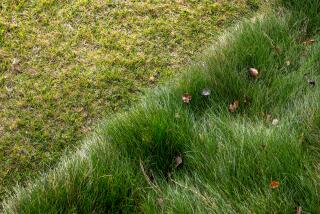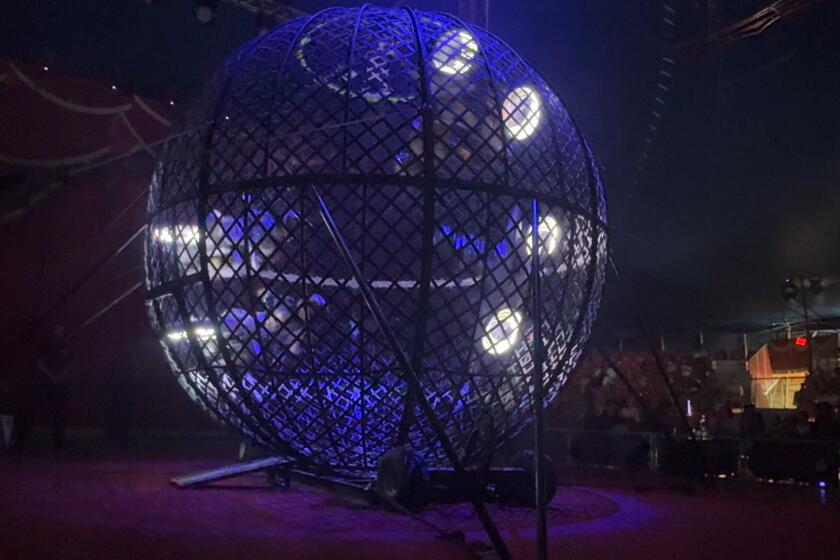July: Keep sprinklers in good repair, irrigate deeply and don’t let container plants go dry in the heat
Find a place in the shade, pour yourself a tall iced tea and take July off. There’s not much for gardeners to do this month other than to water. Plants in containers need the most, but even those in the ground need frequent irrigation. That’s unless, of course, you were clever enough to plant mostly native and other non-thirsty Mediterranean-climate plants, though even they may need a deep soaking at some point.
Smart watering
Make sure sprinklers are in good repair and working properly. If water is running down the street or blowing away as mist, something is wrong. Maybe the water pressure is too high (install a pressure valve) or the nozzles spray too far (swap them out for more efficient kinds).
Set sprinklers so they come on early in the morning, around 4 a.m., when there is no wind to blow the mist into the neighborhood. Early irrigation also gives plants plenty of time to dry before nightfall, which helps prevent disease and cuts down on damage caused by slugs and snails, which need moist soil to travel on. Irrigate long enough so that water gets down to the roots where it is safe from evaporation (6 to 12 inches deep), but not too often; the soil needs a chance to dry a little.
Wilting
Sometimes plants simply can’t take up water fast enough on really hot days, so they temporarily wilt. It’s OK to cool them off with a quick spritz; they should perk up as the sun sets, but it might take all night for them to absorb enough moisture. Watering can actually worsen things by making the crown and root area too wet, which can encourage disease. Root rot diseases -- often brought on by too much water -- look like those caused by the lack of water.
Always check the soil to make sure it is dry -- an inch or two down -- before watering. Irrigation should be deep and thorough, and as infrequent as possible. This encourages roots to go deep where they stay cool and where moisture does not quickly evaporate.
Container tips
Remember that plants in pots are as dependent upon you as a pet -- they need attention. This may mean watering once or even twice a day when it’s really hot. Let the water run out of the bottom of the pot, which helps keep harmful salts from accumulating.
Frequent irrigation also will flush out nutrients so fertilize often to encourage growth, or once every other month to sustain mature plants. If you go on vacation or even leave for a day or two, make sure someone waters the potted plants. As insurance, try putting them in the shade while you are gone so they will not dry out as quickly.
Tomato troubles
Vines often stop producing fruit when the days and nights get too hot, but they will begin again as the weather cools. Watch for the green, knife-edged, keel-backed treehopper. Their young look quite different: black and spiny. They can be crushed with gloved hands (they’re very prickly) or dispatched with soap sprays.
Look for tomato hornworms, which can quickly defoliate stems. Because they’re green, they’re hard to see even though they may be several inches long, so watch for the black droppings. The bugs must be handpicked. Gloves help.
Don’t over water tomatoes. Too much brings on rampant growth and little fruit, and can split fruit, encourage disease or rot roots. Water deeply when you do, so it soaks a foot or more into the ground.
Weed it or weep
Summer weeds produce a gazillion seeds, so be sure to keep on top of low-spreading spurge and chickweed as well as the ever-present oxalis that can fling seeds into other parts of the garden like little siege catapults. If the weeds seed, they may overwhelm the garden next year. Pull out the roots, or the weeds will be back.
Put weeds in a bucket so you don’t inadvertently spread seeds, then toss them in the trash, not the compost.
Temporary color
Nurseries have blooming annuals and bedding plants that you can plant in big, easy-to-water pots for quick, temporary color. Choose pots that are wide but not too deep because most bedding plants have shallow roots. About 6 to 8 inches is plenty deep, but pots can be as wide as you can lift. Put the pots in strategic spots and the whole garden will look colorful for those summer barbecues. You may have to water twice a day when it’s really toasty.
More to Read
Sign up for The Wild
We’ll help you find the best places to hike, bike and run, as well as the perfect silent spots for meditation and yoga.
You may occasionally receive promotional content from the Los Angeles Times.










